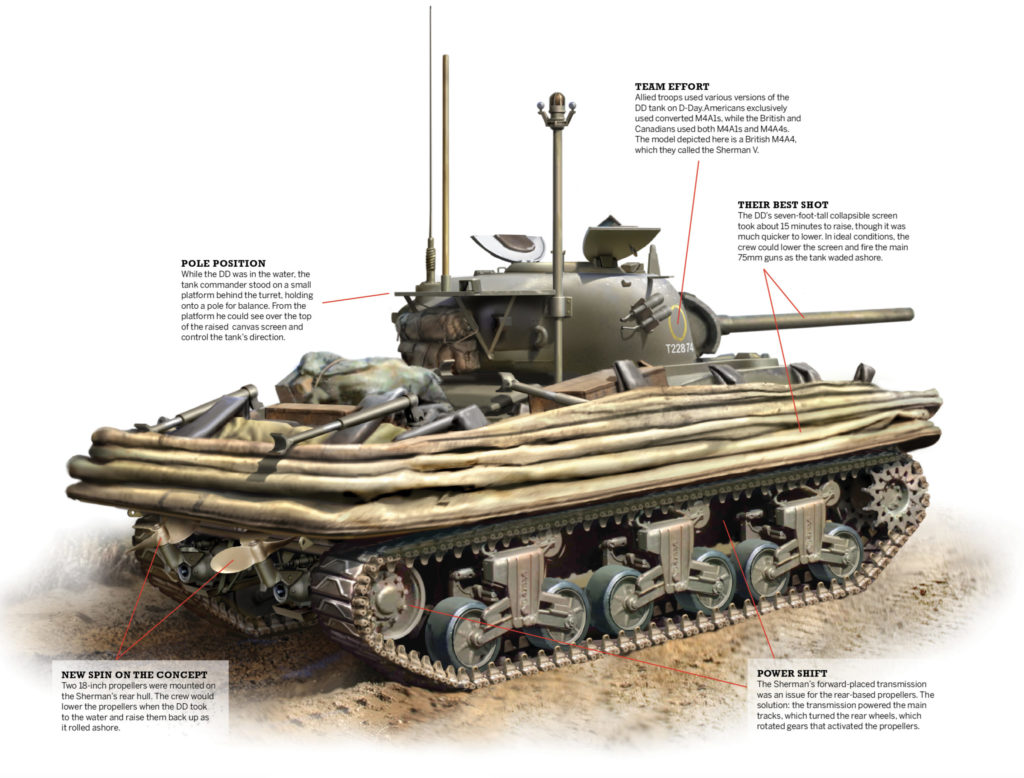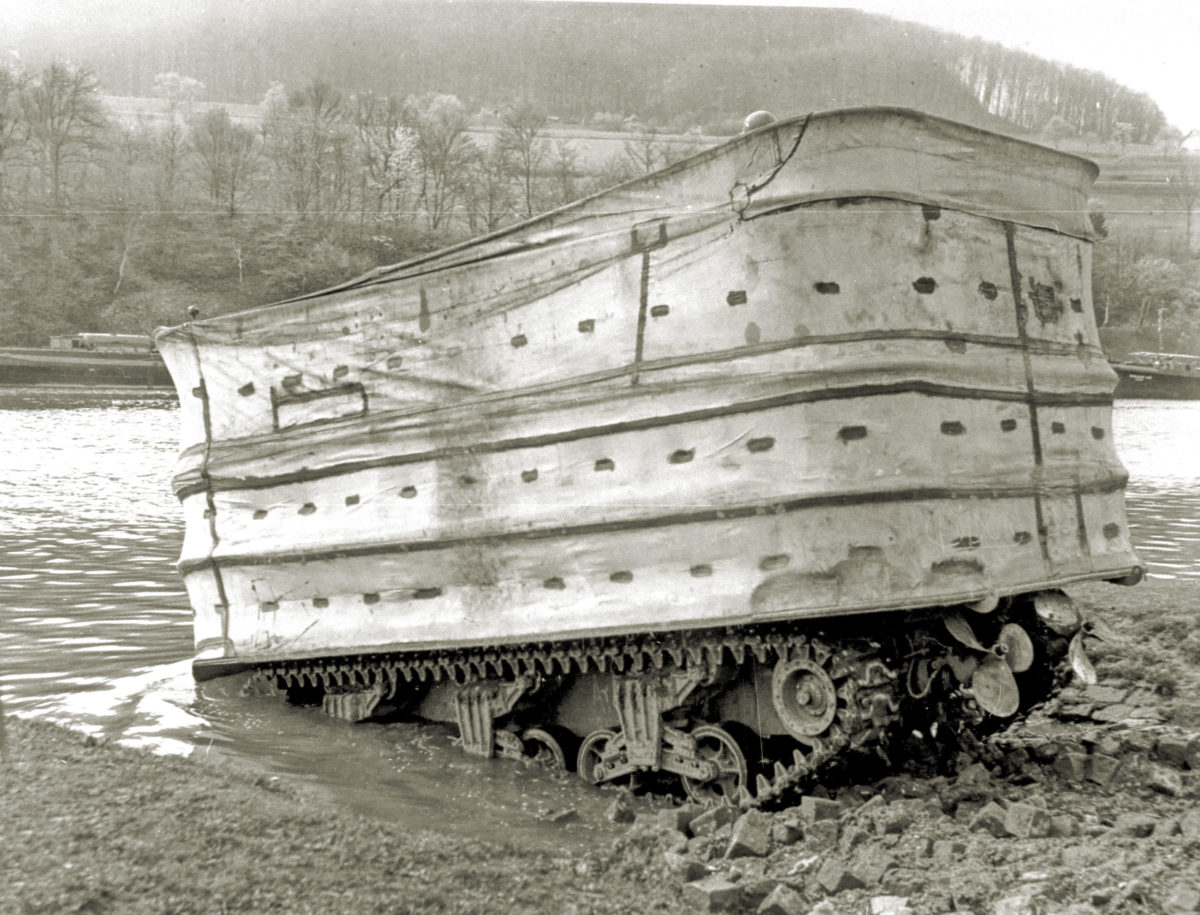Early in the war, the Allies realized that liberating France would require an unprecedented land, sea, and air effort. Necessity being the mother of invention, the British began developing a series of tanks (collectively known as “Hobart’s Funnies”) with individualized, mission-specific functions, including the Duplex Drive (DD) amphibious tank.
The concept behind the DD tank was either brilliant or preposterous: a standard M4 Sherman tank was retrofitted with a watertight canvas screen that contained numerous inflatable rubber tubes for buoyancy. Crews would raise the screen, launch the DD into the water, and lower the rear-mounted propellers. This allowed the now-floating 34-ton tank to putter toward shore at about four miles per hour. But caveats abounded: the canvas was fragile, and once at sea the top of the raised screen extended only one foot above the waterline. The tank required calm waters and light currents to work effectively and safely.
At Normandy, the Americans pegged three DD tank divisions to swim in from landing craft and eliminate German defensive positions at Omaha and Utah beaches. But rough seas and strong currents battered the tanks and at least half sank, with the loss of 33 men. Once on shore, the remaining DDs worked effectively and helped secure the beachheads.
The tanks saw action later in 1944 during Operation Dragoon in France and in Italy in 1945, but for the most part faded from the overall Allied war plan.







